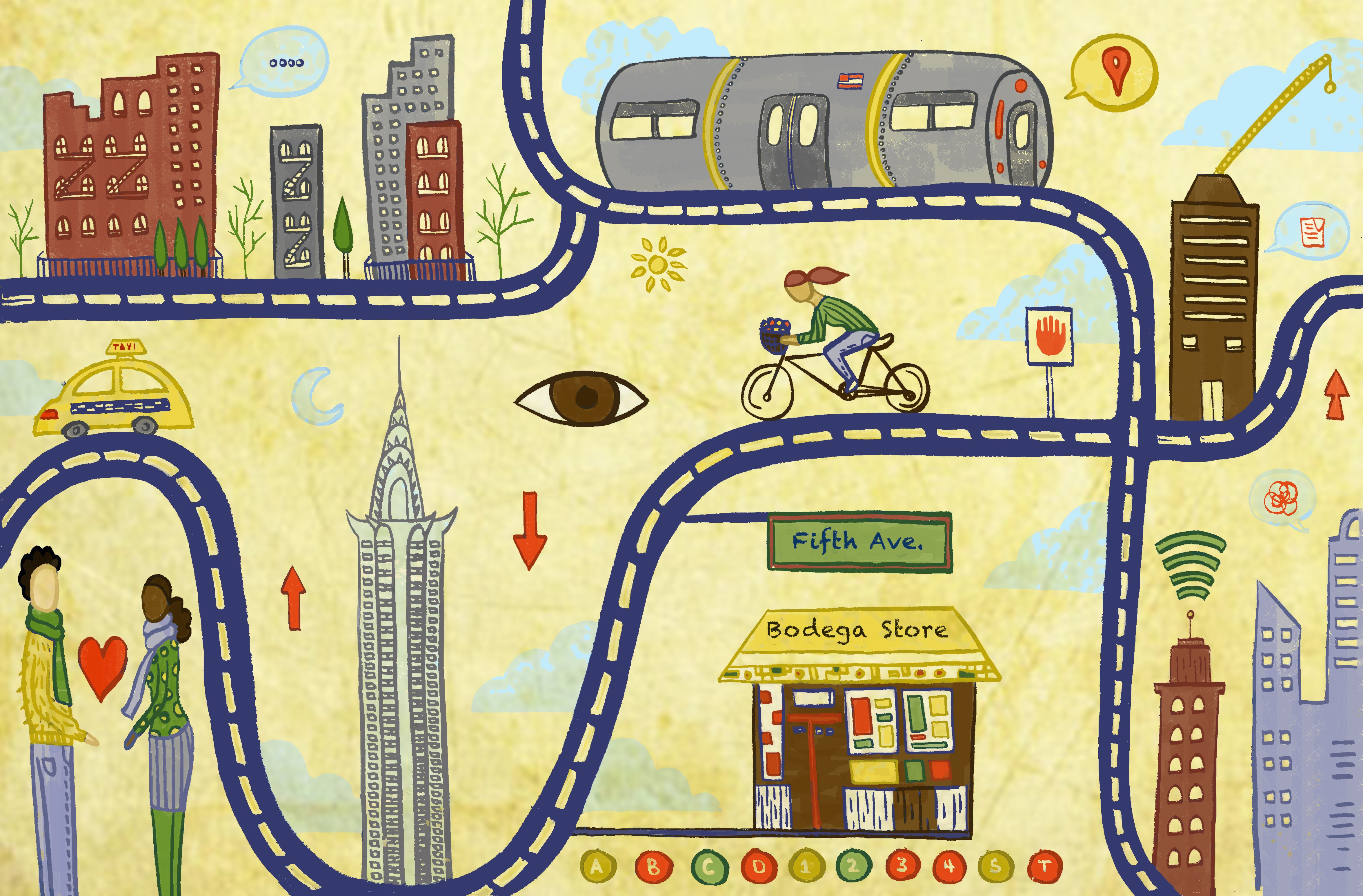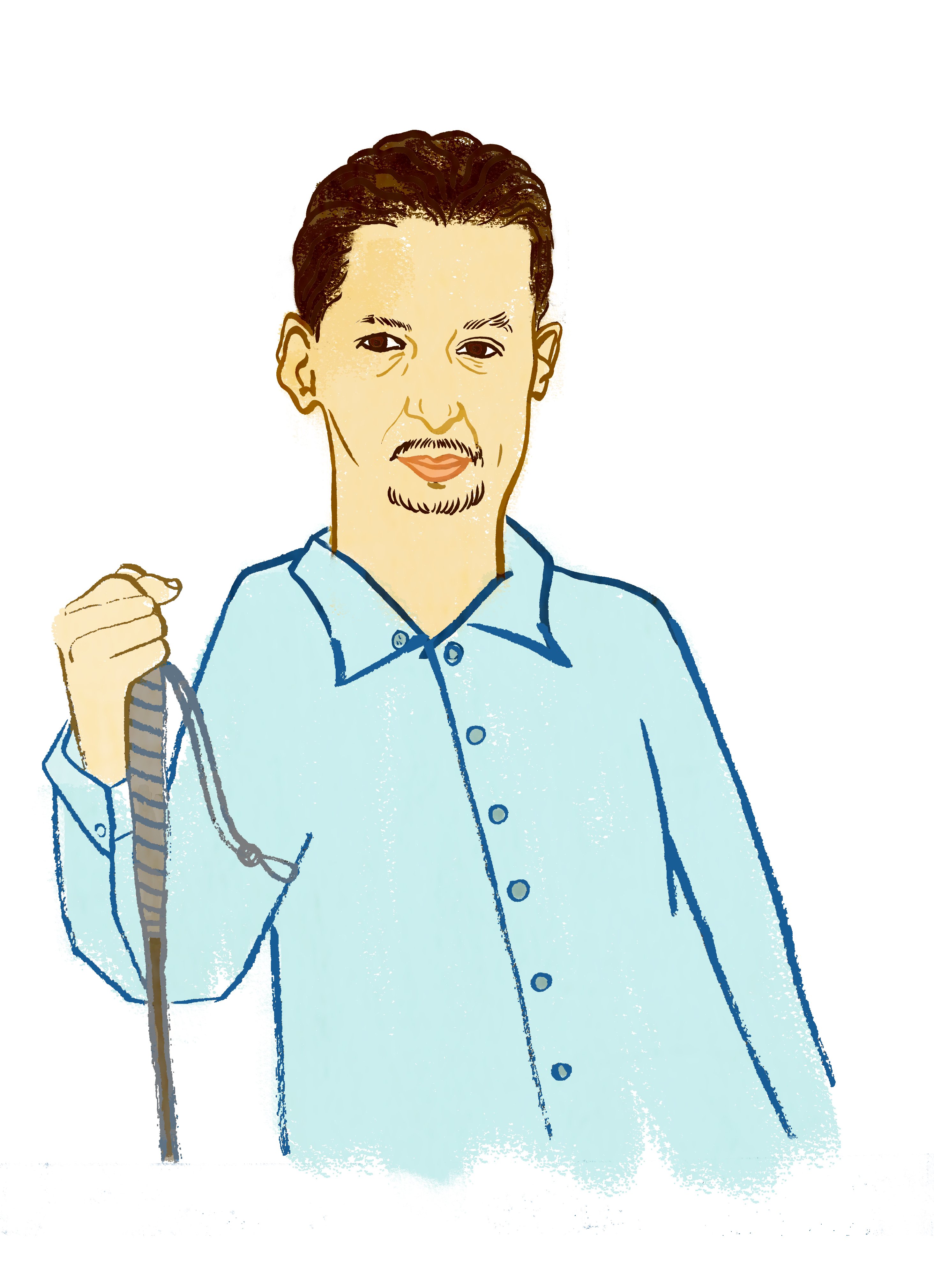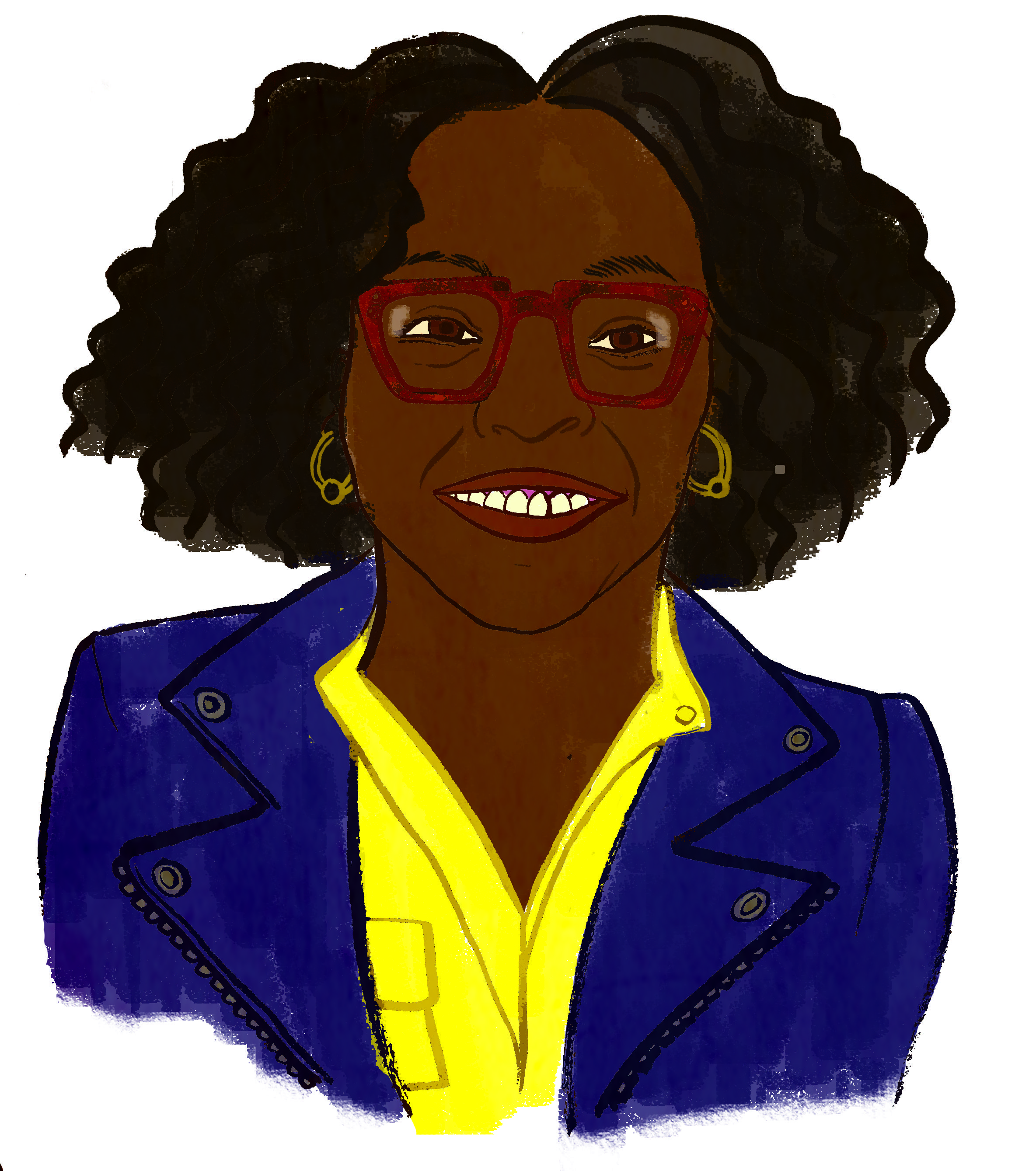
Who is welcome? It’s not just about how many people have access to the internet, but whether that access is safe and meaningful for all of us.
We know the internet can open doors for many, but without the appropriate policies and programs in place, it can also leave others behind. There are many initiatives inside city government and within NYC communities dedicated to improving how New Yorkers use the internet, and how they are impacted by it.
Queensbridge Connected is a community-wide network WiFi model implemented at Queensbridge Houses in Long Island City, Queens, the largest public housing development in the Western Hemisphere. This award-winning program provides free-high speed WiFi and WiFi calling access with speeds up to 25 Mbps and seamless connectivity throughout the development. With a specific focus on inclusion, the project hires and trains residents from the Queensbridge houses to build, support, and promote the network, while also offering device-loaning and free computer classes that focus on building digital skills and online safety awareness.
The Mayor’s Office of People with Disabilities (MOPD) works to make NYC the most accessible city in the world, and this includes making all of City of New York’s websites fully accessible to people with disabilities. Mandated by local legislation, the agency releases biannual reports on the state of accessibility of NYC websites. In July 2017, 71% of sites were deemed accessible, and the office is working to significantly improve those numbers with new policies and agency training materials.
Just this year, MOPD also launched the AbiliTy Cisco Academy in partnership with UJA-Federation of New York, J.E.&Z.B.Butler Foundation, BNPParibas, and Standard Chartered Bank. This program builds on a “train-to-place” model to connect people with disabilities in New York with an industry- leading cybersecurity program and then place them in critically needed cybersecurity positions.
Launched by Mayor de Blasio in 2014, the NYC Tech Talent Pipeline is the City’s tech Industry Partnership, designed to support the inclusive growth of the NYC tech sector and prepare New Yorkers for 21st century jobs. Incubated and supported by the NYC Department of Small Business Services, the NYC Tech Talent Pipeline works with 275+ companies, 17 local colleges, and additional public and private partners to define employer needs, develop training, education, and recruitment models to meet these needs, and scale solutions throughout the City—delivering quality talent for the City’s businesses and quality jobs for New Yorkers.
There are many NYC-based community programs that are working hard to build an inclusive internet ecosystem. To name a few:
- Girls Who Code is a nonprofit working to close the gender gap in the technology sector. Founded in NYC by Reshma Saujani, the organization has reached over 90,000 girls of all backgrounds in all 50 states.
- Black Girls Code is a NYC-based nonprofit working to increase the number of women of color working in technology, with a goal to train 1 million girls by 2020.
- Pursuit (formerly Coalition for Queens) is a nonprofit organization based in Queens with a mission to train adults in need to get their first tech jobs, advance in their careers and become tech leaders for the next generation.
- Older Adults Technology Services (OATS) is a NYC-based nonprofit dedicated to helping senior citizens utilize technology to live successful, independent, and more connected lives. The organization supports critical community programs like Queensbridge Connected.
- Lesbians Who Tech is a nonprofit in NYC that Queer women working in or around technology. To date, the group supports over 40,000 non-binary people, women, people of color, and LGBTQ technology professionals with annual summits and scholarship opportunities.
A big emerging issue in digital inclusion involves how new automated technologies might perpetuate new forms of discrimination and exclusion. Because of this, it’s important for cities to examine how algorithms are used to make decisions. The City of New York last year convened the first taskforce in the nation for reviewing “automated decision systems” – more commonly known as algorithms – through the lens of equity, fairness, and accountability. The taskforce will produce a report in late 2019 recommending procedures for reviewing and assessing City algorithmic tools.

“accessibility is a selling point, not just another check box for compliance”
Walei Sabry is NYC’s first Digital Accessibility Coordinator. Sitting between the Mayor’s Office of People with Disabilities (MoPD) and the Department of Information Technology & Telecommunications (DoITT), his unique position is to ensure that all NYC residents, especially those with different abilities, can access city services offered over the internet. A long-time advocate for people with disabilities, Walei knows first-hand what the barriers are. Drawing from lived experience and his technical expertise, he now trains and supports more than 50 city agencies to provide better digital accessibility for over 300 websites and 50,000 pages, reaching more than one million New Yorkers living with disabilities.
Tell us about your work.
As Digital Accessibility Coordinator, I am responsible for making the City’s digital products work well for people with disabilities. Many tools and sites that are important to digital safety are not accessible. There is an incredible amount of work to do in this space, starting with engaging companies and organizations to make improvements. For example, the City of New York uses many digital technologies including websites, electronic documents, social media, videos, and apps, and my job is to ensure that everyone can use them. I’ve also instituted a series of free, public cybersecurity trainings and Data Detoxes specifically designed for people with disabilities.
What are you proud of?
In 2015, I was working with MoPD when NYC’s Department of Education announced that Amazon had won its bid to create a new e-book marketplace for the City’s 1,800 public schools. At the time, Amazon’s accessibility standards were less than satisfactory, and did not seem to be a top priority for the corporation. The National Federation of the Blind had been battling with Amazon over accessibility standards for years, and in this case, they had sent several letters and planned protests to draw attention to the thousands of NYC public school students and teachers with disabilities who would be left behind by this $30 million contract.
From the city-side, I spoke from a personal point of view and was at the table to arbitrate for tangible accessibility goals moving forward. Since then, Amazon has come full circle – they promote an accessibility culture within Amazon that has led to many new features and devices. They’ve built their own screen reader into Kindle devices and audio description into Amazon prime, for example. Now, accessibility is a selling point, not just another check box for compliance. In the end, the National Federation for the Blind and Amazon announced a joint commitment to work together to improve accessible reading experiences for blind and low-vision students.
More recently, I started a digital inclusion committee for city agencies to identify digital accessibility issues and learn together. We’re focusing on making maps more accessible as they are increasingly part of online experiences.
What challenges persist to full accessibility and digital inclusion – locally and beyond?
NYC has Local Law 26 requires its agencies to undertake reasonable efforts to make websites accessible, and every other year I issue progress reports. Still, more can be done to improve accessibility. For example, unemployment for people with disabilities between the ages of 18 and 65 is 80% across the City. The hope has always been that technology will empower more people with disabilities to enter into the workforce and live more independently. When it comes to City employment, we can and should improve our internal digital accessibility accommodations to ensure more people with disabilities are hired.
One step we’re already taking to change workforce opportunities for people with disabilities overall is NYC@Work initiative. This is a partnership with the private sector, nonprofits, and city agencies to build a talent pool of people with disabilities trained to work in the cybersecurity sector, for example. Globally, everybody should make reasonable accommodations to do the same.
How can NYC be an active partner in this work?
Maintaining a strong advocacy and awareness mechanism within City government is crucial to pushing better accessibility and digital inclusion ahead. Considering what was possible with Amazon, the City should use its purchasing power and weight to push industry to do better on accessibility. My goal for NYC is to introduce accessibility into everything we encounter. A small example would be making sure that all citywide emails to employees have alt text in images.
Final Word
In NYC, some City agencies have really started to adopt the language of internet health to improve digital experiences inside City government and for New Yorkers broadly. Looking ahead, I’m thinking about smart cities a lot. These initiatives can go really well or really wrong depending on who’s at the table – people with disabilities must be involved at all stages of the process. NYC can be an active partner by modeling what it takes to engage people with disabilities in everything that affects us, because what works for us makes products better for everyone.

“under the guise of solving inequality, ADS exacerbates harm of those seeking government services”
Rashida Richardson is Director of Policy Research at the AI Now Institute, where she leads research strategy and initiatives on the topics of law, policy, and civil rights. By examining complex social issues at their roots, Rashida works to better deconstruct the values and biases embedded in our rapidly advancing technologies, elevating the potential for more transparent policies and equitable conversations. From the use of questionable data in predictive policing to the discriminatory outcomes enabled by black-box automated decision systems (ADS), Rashida surfaces the injustices baked into tool designs and offers ways for cities and civil society to measure, account for, and transform them. This includes leading advocacy efforts related to the Automated Decision Systems Task Force in NYC. The first of its kind in the US, and reflective of NYC’s strong human rights law, the taskforce will recommend strategies for greater visibility into the City’s use of technology and strategies for redress when harm is done.
Tell us about your work.
I am a lawyer and researcher with the AINow Institute at New York University, where we examine the social implications of artificial intelligence and other emerging technologies. This includes facial recognition, teacher evaluation algorithms, and the kinds of risk assessment tools used in criminal justice decisions. I think about how to use the law to address or mitigate the problems we see with AI – for example, to create more transparency and oversight of procurement and use of automated decision systems in NYC.
Last year, we developed the Algorithmic Impact Assessment framework (AIA) to do just that, helping affected communities assess the use of AI for fairness or safety. We also developed a toolkit that breaks down AI and machine-learning concepts, so advocates can understand how algorithms are being used in government to inform their strategies and tactics. By drawing on a long history of legal impact assessments in the human rights, environmental justice, and privacy realms, we build capacity amongst stakeholders, from municipalities to technical experts to the legal community.
Much of our research is on the technology of predictive policing. We looked at counties and cities with long histories of unlawful and biased conduct, and the influence this has on data-driven systems, complicating the predictions they make. Often companies think that by removing specific “bad data” from predictive policing systems they’ll be left with data that won’t produce biases. But all data points are influenced by historical police practices and social inequities, such as race-based housing discrimination, for example. These data sources are inextricably linked – cutting and pasting data doesn't change the bias.
To assess what the problem is and to devise actionable solutions, you have to understand how government works as well as what the interests are of many different stakeholders. So our AIA is, at best, a diagnostic tool for identifying the underlying problems.
What are you are proud of?
Last year, with a lot of other local organizations, we produced a joint public letter offering recommendations to the NYC taskforce examining government use of ADS. That process, though long, was useful because it forced us to think proactively about solutions rather than simply critiquing the situation. It took many drafts of everything from language and legal phrasing to developing a basic understanding of how some of these systems work in real life. ADS increasingly determine things like public school assignments, Medicaid benefits, and child welfare outcomes. ADS is used in pretrial risk assessment as an actuarial tool for judges deciding if someone should receive bail or not. In each of these cases, the outcome can be grave – a lot is at stake.
It is important to know how decisions are made and to ask, “if the outcomes of an ADS affects different communities differently, then what laws or policies should be used to address those disparate outcomes?” No one person has the answer. So this collaborative effort was a great example of showing why this work has to be interdisciplinary. That’s where change can happen.
What challenges persist to an equitable internet – locally and beyond?
AI is forcing larger conversations about structural and systemic biases and harms, both within society and government that, collectively, we’ve been avoiding – especially those with vested interests. The ethics debate in AI is a game of hot potato. Some think it’s up to government to regulate; others think it’s up to the tech sector to figure out. But really we need people from all sectors to both be accountable and feel that it is within their agency to do something.
Another challenge is that massive amounts of data are being collected on vulnerable populations. ADS disproportionately affects lower income communities because they are more likely to access government services, and information-sharing across agencies means it can be harmful. If you received mental health therapy through a government portal, that’s a data point that could be used against you in criminal justice, child services, or education decisions later. If you are someone with means and you go to a private provider, that data doesn’t enter the system. Under the guise of solving inequality, these systems actually exacerbate harm of the very people who seek out government support and services they are entitled to.
How can NYC be an active partner in this work?
Pilot the AIA framework! If not citywide initially, then targeting some of the most concerning use cases in criminal justice, child welfare, and education. What would it take to do that? First, define which “automated decision systems” are open to public debate. This step is critical because these systems have huge legal carve-outs and exceptions. Second, use common language to define what “disparate impact” means to someone who is not a lawyer. Provide ways for the public to raise legal concerns and provide feedback, and for government to actually respond. Funding to do that, and community engagement, will determine the AIA framework’s value overall. Lastly, consider a private right of action – that means the right to sue for harm caused by a decision or practice – to hold agencies accountable.
Final Word
AI tends to scare people. But it’s actually people and communities affected by these technologies and government decisions who have greater insight into the social inequalities that these same technologies can scale and worsen. Everyone has something to contribute to this conversation. Everyone should have a seat at the digital table.